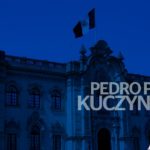Vote by vote: The economist who hopes to govern Peru
The San Pablo leper colony in Iquitos in the Peruvian Amazon is not only famous for being one of the hostels where Che Guevara stayed during his travels around Latin America in his youth. It is also known for having been the research institute where Dr Maxime Kuczynski began his fight against tropical disease in the Peruvian jungle. Maxime, a German doctor with Polish and Jewish roots, married the schoolmistress, Madeline Godard, a French citizen with Swiss lineage. Together they had a son called Pedro Pablo, born October 3 1938 in the city of Lima, the capital of Peru.

He spent his childhood amid the heat and humidity of the jungle. He studied primary education at Markham School in Lima, and then completed his secondary education at Rossall School in England. At the same time, the young Kuczynski also pursued an artistic education as a student at the conservatory in Switzerland, while in England he studied composition, piano and flute. His musical education has meant that today, even while occupying important public posts, he gives classical music concerts, almost always donating the profits to charitable causes.
However, PPK's main field of expertise is economics. He is a graduate of Oxford University and has Master's in economics and politics from Princeton University. Thanks to his academic qualifications, throughout the 1950s he enjoyed a successful career in the private sector. Pedro Pablo Kuczynski's professional life has taken place almost entirely outside Peru, where he has worked for a variety of highly prestigious firms and organizations.
In the mid 1960s, the country once again underwent a period of social unrest caused by a military coup that toppled the democratic government of Manuel Prado Ugarteche. Elections were reinstated in 1963, and were won by the architect Fernando Belaunde Terry, leader of the Acción Popular party. Against this background Pedro Pablo returned to Peru in 1966 to offer his services to the new democratic government, and was appointed chairman of the Central Reserve Bank. Tragically, on Kuczynski's 30th birthday, another military coup once again cut short the democratic process.
He did not return to Peru until new elections restored Belaunde to the Presidential Palace in 1980. On this occasion Kuczynski came home to take charge of the Ministry of Energy and Mines, where he set out to promote the exploration and exploitation of new deposits by the private sector. However, the facilities and exemptions granted by the government were repealed by the incoming administration in 1985.
Kuczynski did not hold another ministerial role for 16 years. This was during the government of Alejandro Toledo when PPK was given the portfolio of the Ministry of Economy. However, the crisis triggered by the popular rejection of the privatization of two hydroelectric companies in Arequipa in the south of the country led to his resignation from the post in 2002. Two years later, he was once again summoned by President Toledo, this time to occupy the Presidency of the Council of Ministers, a post in which he remained until the end of the legislature.
His record earned him widespread popularity, and inspired him to stand for president in 2011, when he came third after Ollanta Humala and Keiko Fujimori, and significantly ahead of his former mentor, Alejandro Toledo.
PPK then set up his own political organization from which to promote a new bid for the presidency of the republic. “Peruanos Por el Kambio” (Peruvians for change) is the name of the political party with which he launched his presidential campaign, and with which he reached the second round where he competed with Keiko Fujimori.
Early official data on the vote recount seems to show he has won by a slight margin: 1%. The National Office of Electoral Processes’ (ONPE) final announcement is still awaited. This could take until Tuesday, June 7th because election records from some overseas cities and more rural areas, far from Lima, have not yet been processed.